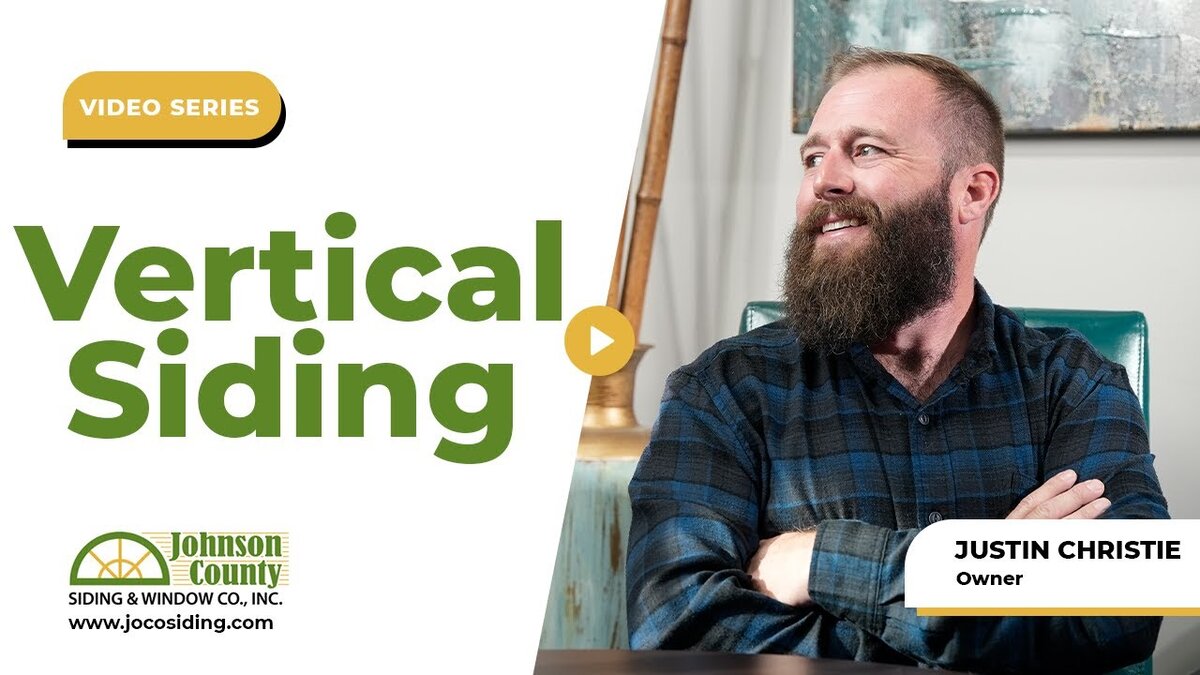Severe weather can take a toll on your home, particularly your siding. If your house has just endured a hailstorm, strong winds, or other storm-related events, it’s essential to inspect your siding for damage. Many homeowners overlook this step, assuming their siding is fine as long as there aren’t immediate leaks or noticeable issues. However, damage from hail or high winds can be less obvious at first and cause significant problems down the line if left unaddressed.
We’ve been through our fair share of storms here in Kansas City, and knowing how to properly inspect your siding for damage can save you from future headaches. In this guide, we’ll take you through the steps to make sure your siding stays in top shape after severe weather.
Types of Siding and Their Vulnerability to Storm Damage
Before exploring how to inspect your siding for damage, it’s important to understand the different types of siding and how each reacts to severe weather conditions.
1. Vinyl Siding
Vinyl is a popular choice for many homes due to its affordability and ease of installation. However, vinyl siding is also prone to damage, particularly from high winds and hail. The material’s rigidity means it can crack or break when struck by large hailstones or when strong winds rip it away from the nailing hem.
2. Wood Siding
While beautiful, wood siding requires more maintenance. Wind and hail can cause significant damage, especially if the wood is already weakened by rot. Inspecting wood siding after a storm is crucial to prevent long-term damage.
3. Stucco and Fiber Cement Siding
These are more durable materials and tend to withstand severe storms better than vinyl or wood. However, they can still sustain damage, especially if there are weak points or the materials have been improperly installed.
4. Stone and Brick
These are some of the most resilient siding materials. While they generally hold up well during storms, checking for cracks or mortar damage is always a good idea.
How to Inspect Your Siding for Hail Damage
Hailstorms are notorious for causing siding damage. When inspecting for hail damage, the process is relatively straightforward.
1. Start By Walking Around Your Home
Take a close look at all the walls of your house, especially the side that faced the brunt of the storm. Hail damage is often directional, meaning one side of your house may be hit harder than the others.
2. Look for Holes and Cracks
If the hail was large enough, it could leave visible holes in your siding. Vinyl siding is particularly susceptible to this, as its rigidity makes it more prone to cracking. You may notice circular cracks or punctures.
3. Check for Dents
Even if there aren’t any holes, dents in the siding, especially in softer materials like aluminum or vinyl, can compromise its integrity. These dents might not cause immediate leaks but can weaken the material, leading to future problems.
If you notice any significant damage, the next step is to contact your insurance company and a contractor. A professional will be able to assess the extent of the damage and provide you with a plan to repair or replace your siding.
Wind Damage to Siding: What to Look For
Wind damage can sometimes be harder to spot than hail damage, but it’s just as important to address.
1. Check for Loose or Missing Panels
Vinyl siding is installed using nails along the nailing hem, but strong winds can get underneath the panels and pull them off the house. If you see any loose or missing siding, you’ll need to fix it before water gets behind the panels.
2. Inspect for Cracks Along Seams
Even if the siding hasn’t blown off, wind can cause stress along the seams, leading to cracks or gaps. These cracks allow water to seep in, causing damage to the underlying structure.
3. Look for Buckling or Warping
Wind can also cause siding to warp or buckle, particularly if it was improperly installed. Warped siding is more than an aesthetic issue—it can indicate a deeper structural problem that needs to be addressed.
Why We Recommend Durable Siding Materials
While vinyl is common, it’s not always the best option for areas prone to severe weather, like Kansas City. We often recommend more durable materials, such as:
- James Hardie fiber cement siding: This material stands up well to wind and hail and is less likely to sustain damage.
- Stucco and stone: Both are excellent choices for withstanding the elements, especially in regions with frequent storms.
- Wood (if well-maintained): While wood can be vulnerable to rot, properly maintained wood siding can last and resist wind and hail damage.
Conclusion
Inspecting your siding for damage after a storm is crucial to maintaining the integrity of your home. Pay close attention to any visible damage, especially cracks, holes, or missing panels. If you’re unsure about the condition of your siding or spot any potential problems, it’s best to contact a professional for a thorough inspection.
If you need help assessing or repairing your siding after a severe storm, contact Johnson County Siding & Window Co. today. We’ll make sure your home is protected from further damage and provide expert solutions to any siding issues you might have.


















